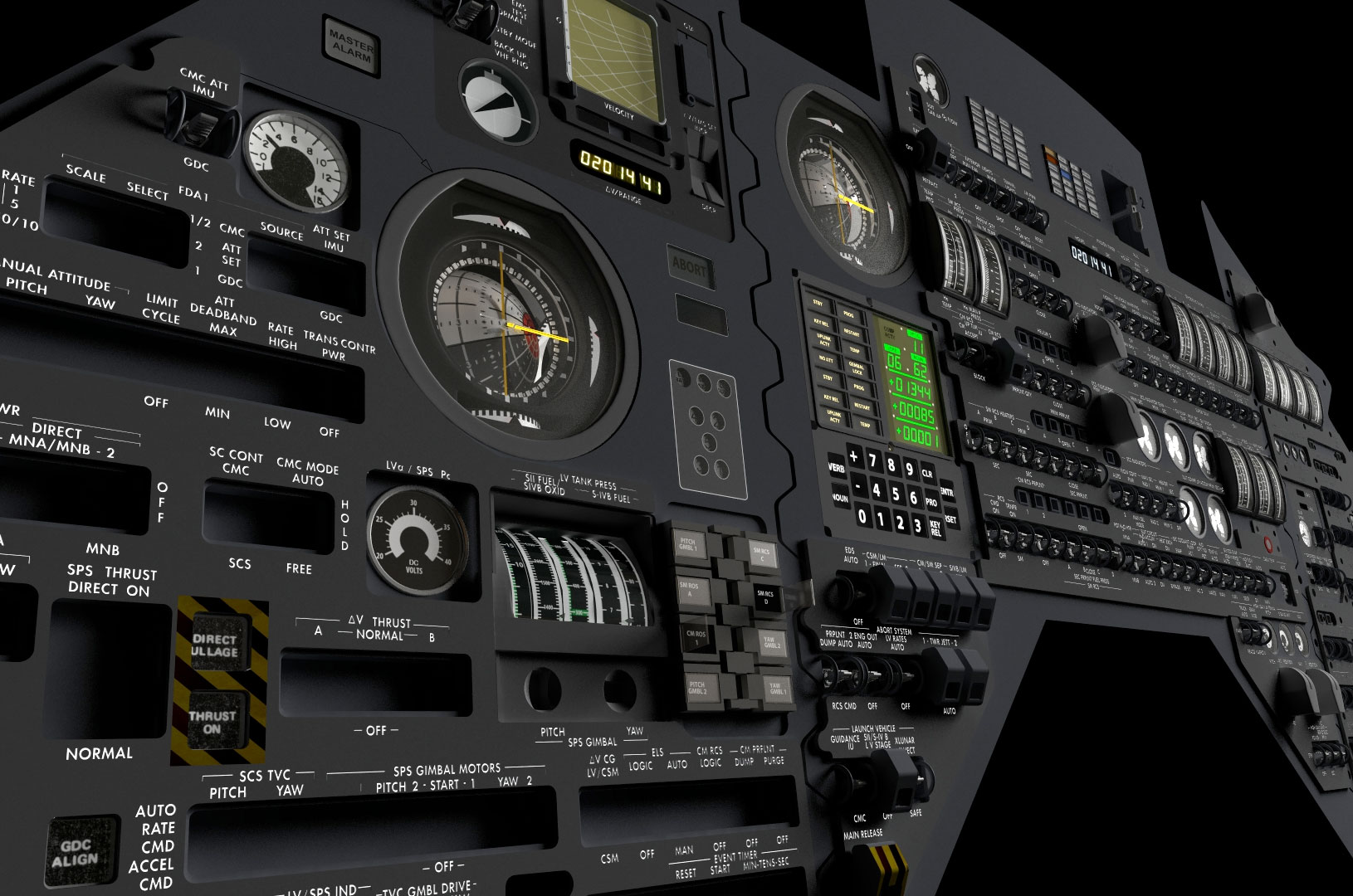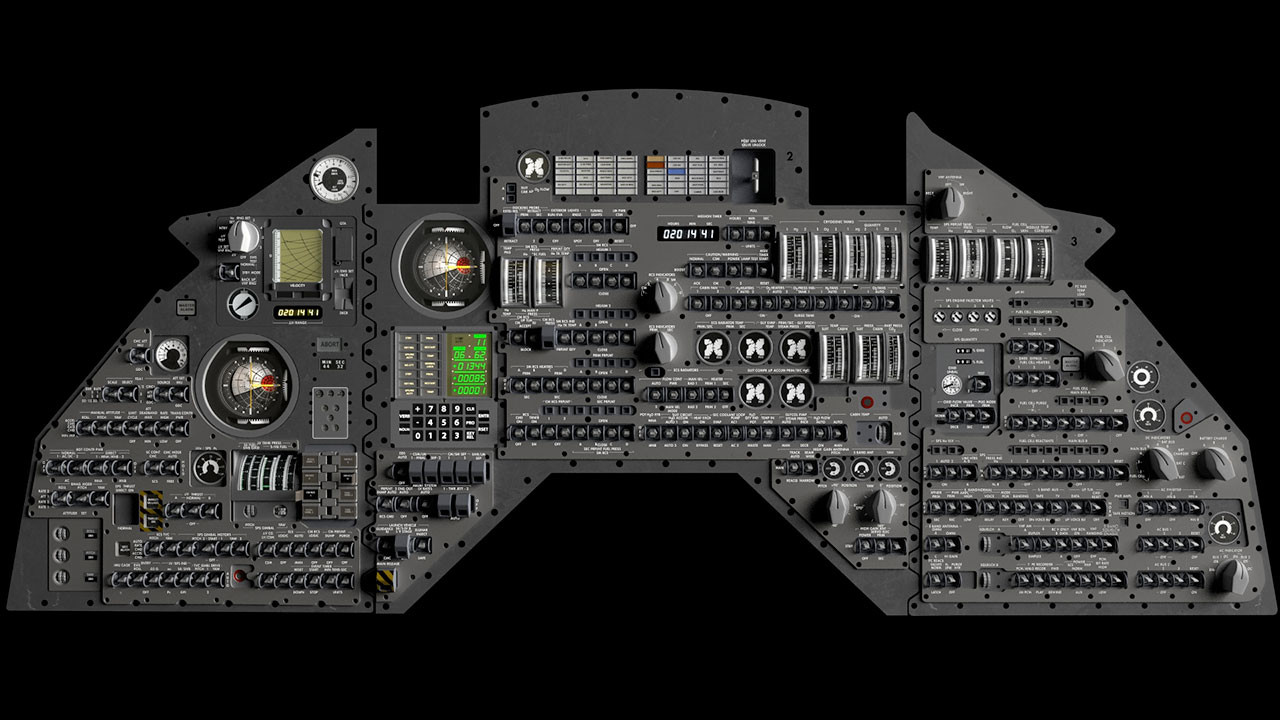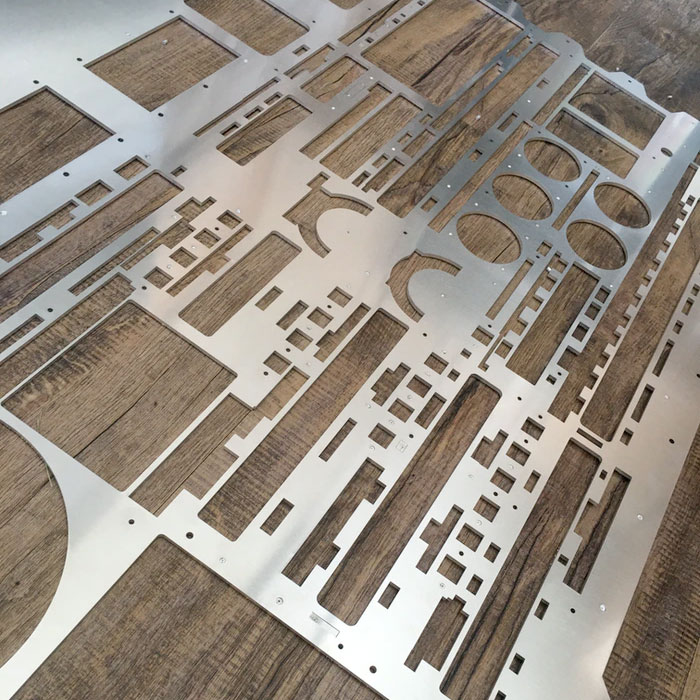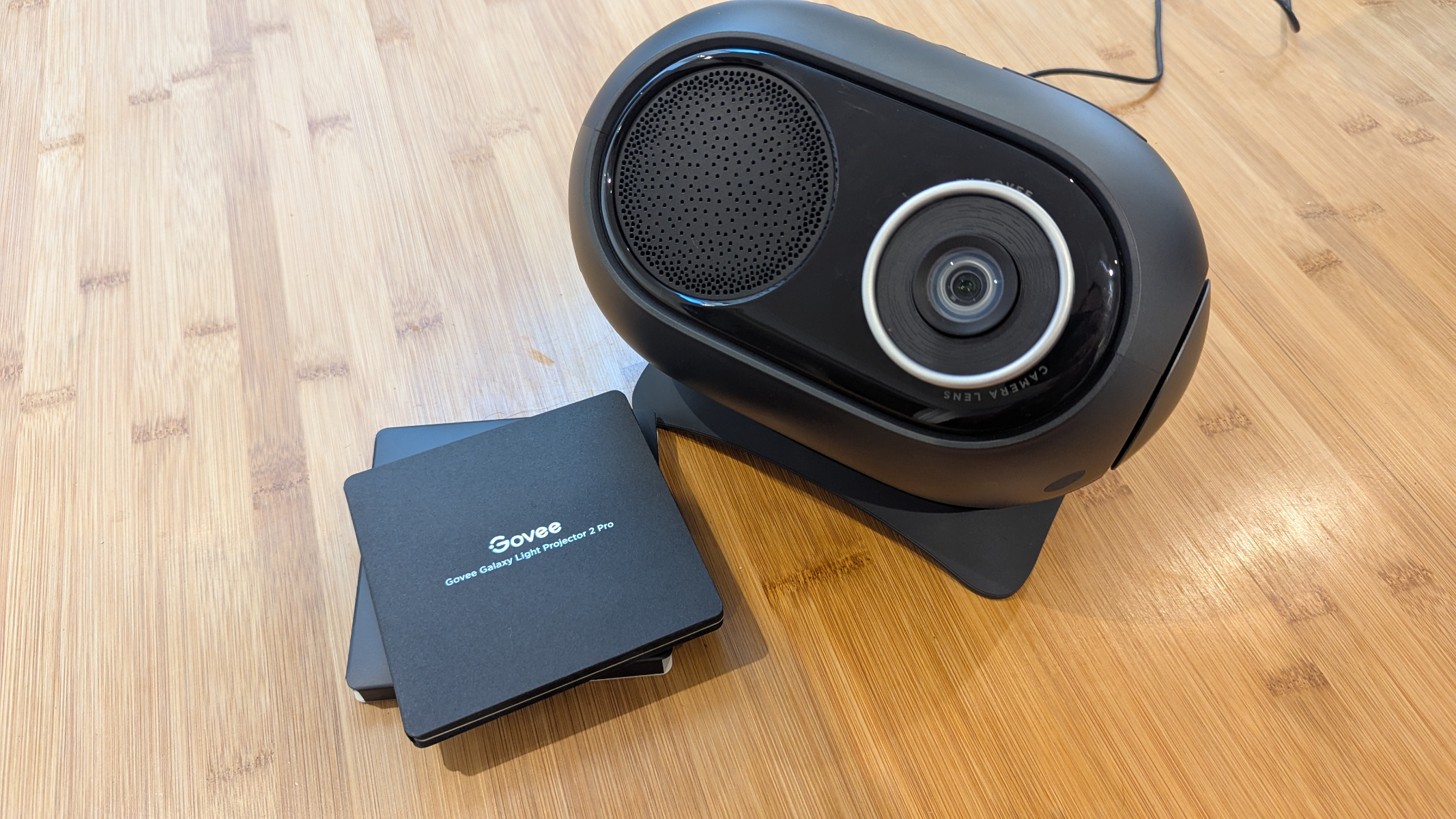Hollywood artists offer full-scale replica of Apollo spacecraft controls

You can now take the controls of a historic NASA spacecraft — literally.
A team of Hollywood prop and visual artists are offering replicas of the Apollo command module control panel. The museum-quality reproduction features every switch, knob and indicator that was used on board the first three missions to land astronauts on the moon and to bring the Apollo 13 crew safely back to Earth.
"It is here where the impossible becomes possible," team leader Mark Lasoff, an Academy Award-winning artist whose credits include the 1995 feature film "Apollo 13," wrote about the control panel. "It is here where humans and machines interface. It is here where every vital operation, including navigation, propulsion, communication and life support is calculated, calibrated and controlled intricately."
"It is both an engineering feat and a work of art," Lasoff wrote of the flight deck.
Related: Apollo Quiz: Test Your Moon Landing Memory
The Apollo command module was the gumdrop-shaped capsule that launched astronauts atop Saturn rockets and returned to an ocean splashdown at the end of their missions. The control panel spanned the length of the crew members' seats.
Lasoff's personal desire for a replica control panel dates back almost as long ago as the Apollo missions themselves.
Breaking space news, the latest updates on rocket launches, skywatching events and more!
"I have wanted to build this control panel since I was ten years old. I have thought about it countless times in my life," he said. "And finally, one day, about two years ago, I began this journey."
Measuring an expansive 82 inches wide, 33 inches tall, and 7 inches deep (208 by 84 by 18 cm), the replica control panel was designed using the original blueprints for the NASA spacecraft. Lasoff and his team also used 3D scans of the Apollo 11 command module produced by the Smithsonian's National Air and Space Museum to verify their details.
Related: NASA's 17 Apollo Moon Missions in Pictures
The replica panels will be built and assembled using 14 separate die-cast metal molds and CNC-machined acrylic plates, which will then be painted, laser etched with text and outfitted with LED backlighting to illuminate the panel, just like the original. Lasoff on Wednesday (Aug. 18) revealed the first laser-cut panel section in an update to the project on the Kickstarter crowdfunding website.
"In my entire thirty-year career, I can honestly say this is an extremely impressive creation. The detail is amazing. The two years of modeling it really paid off," Lasoff wrote. "The next step is to get the left and right panels cut, which could happen next week. Then we need to cut the upper acrylic panels."
The Kickstarter campaign is offering the full-scale metal replica for $3,900.
Related: The Apollo Moon Landings: How They Worked (Infographic)
The project was previously asking $1,200 for the full-scale metal edition, $695 for a full-scale plastic and acrylic version and $295 for a 36-inch wide (91 cm) half-scale, injection-molded plastic model. A change in manufacturers, though, significantly increased the cost to produce the control panel, resulting in only the full-scale metal replica going forward at the higher price.
The crowdfunding campaign is still offering high-resolution digital posters for pledges of $10 and a full set of files to 3D print the control panel yourself for $100.
Lasoff and his team are seeking to raise $148,000 for the project to go forward. As of Monday (Aug. 23), just over half way into its two-month run, the campaign had attracted 94 backers pledging more than $59,000, or 40 percent of the total needed. The project closes to new backers on Sept. 21.
If the campaign is funded, it will not only outfit enthusiasts' homes and offices with replica control panels, but extend the displays into public venues as well.
"If this campaign meets its goal, we will donate 10 complete panels to educational institutions and museums to inspire new generations to embrace science and technology," wrote Lasoff.
Follow collectSPACE.com on Facebook and on Twitter at @collectSPACE. Copyright 2021 collectSPACE.com. All rights reserved.

Robert Pearlman is a space historian, journalist and the founder and editor of collectSPACE.com, a daily news publication and community devoted to space history with a particular focus on how and where space exploration intersects with pop culture. Pearlman is also a contributing writer for Space.com and co-author of "Space Stations: The Art, Science, and Reality of Working in Space” published by Smithsonian Books in 2018.
In 2009, he was inducted into the U.S. Space Camp Hall of Fame in Huntsville, Alabama. In 2021, he was honored by the American Astronautical Society with the Ordway Award for Sustained Excellence in Spaceflight History. In 2023, the National Space Club Florida Committee recognized Pearlman with the Kolcum News and Communications Award for excellence in telling the space story along the Space Coast and throughout the world.



